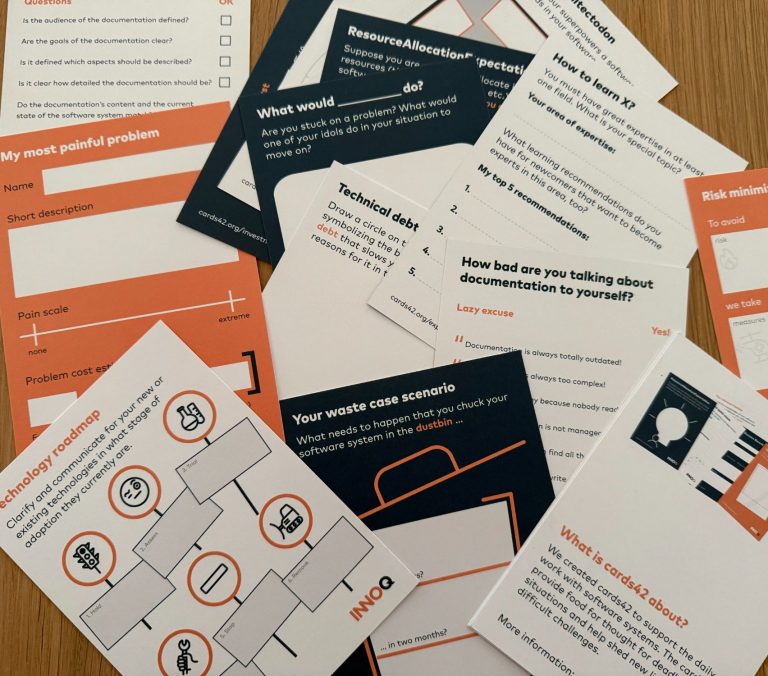Articles & Perspectives
A Collection of Reflections and Practical Insights - Where Knowledge Meets Real-World Practice
by Berrin Akvardar
Team Collaboration Through Interactive Brainstorming Retrospectives
Retrospectives are invaluable for Scrum teams as they provide a dedicated space for team members to openly reflect on their recent work, discuss successes and challenges, and identify areas for improvement. For an Agile Coach, retrospectives are essential for uncovering recurring issues or patterns that may hinder the team’s progress, such as communication barriers, process inefficiencies, or gaps in collaboration. By facilitating these sessions, an Agile Coach creates a safe environment where team members feel empowered to share their perspectives, allowing the team to collectively acknowledge areas for growth. Through this process, the coach and team can collaboratively generate actionable solutions, fostering continuous improvement, stronger team cohesion, and ultimately, greater efficiency in reaching their goals.
Recently, during a team co-location event, I facilitated a unique retrospective session to help one of my teams to reflect on and improve our collaboration and address some of our recurring challenges. As my teams are all remote and located in different cities and countries, this co-location event was a good opportunity to let one of my teams to brainstorm on ideas in person and do this in actual physical breakout rooms. Everything is simply also possible as remote, using remote breakout rooms on e.g. MS Teams. But expressing feelings and emotions during a physical face-to-face breakout session makes the conversations and discussions more interactive and helps the team members build stonger bonds with each other.
This event offered an opportunity to connect in person, share perspectives openly, and work toward solutions. To maximize engagement and creativity, I used an interactive approach and the activity cards that allowed everyone to contribute their ideas actively. These activity cards are made especially for Software Development teams to brainstorm on their issues and come up with best possible solution ideas and actions.
The activity cards are called "Cards for Analyzing and Reflecting on Doomed Software" and can also be found as digital on cards42.org, which is managed by INNOQ. One of my friends introduced me with cards42, which she learned about during an international conference. As I explored the cards, I found them suitable to start conversations and let the team brainstorm on the topics that are suggested on the cards. Which ended up surprisingly progressive and we came up with actionable results.
For this retrospective I prepared 3 Breakout rooms, physical rooms at the office, using breakout group names to make it more playful. I prepared enough papers with the breakout group names so that the team members could select their rooms and breakout group mates. They selected only one folded paper piece to locate their breakout group.

Then I spread the cards on the table and told them to decide with their breakout group mates on one of the cards, which explains a problem/topic they think that is important for the team to discuss and brainstorm about. With cards in hand, they split into 3 breakout groups of two team members and started brainstorming on the problem/topic to come up with:
- Reasons of the problem/topic
- Possible solution ideas
- Actions to reach the solution
Each group had 20 minutes to brainstorm ideas and potential solutions for the issue on their card. This short time frame kept the discussions focused and energized, prompting everyone to get creative and think on their feet. Working in small groups allowed for more intimate, focused dialogue, where each voice could be heard, and every idea was valued.
Results and Reflections
After the breakout sessions, we regrouped to present the ideas that emerged during the breakout sessions. Each group shared their chosen challenge, along with the insights and potential solutions they discussed. The variety of perspectives was incredible, with some groups coming up with ideas that the rest of us hadn’t considered. This format helped reveal not only common themes across different challenges but also creative approaches we could apply more broadly within our team.
You would say, why use cards to let the team brainstorm on topics. I could have picked couple of topics on my own or ask the team to think of some topics to brainstorm about. Sometimes we need some influence to nudge us towards some ideas, or to at least kick start thinking and discussing about topics which are important for our teams. This time I used cards42 to inspire my team mates for to discuss on topics that are important for them. There are too many other retrospective style cards which can inspire the teams to discuss on topics that are important for their teams.
What is Next?
This interactive retrospective was a valuable experience, enhancing both our teamwork and our problem-solving approach. We managed to address some of our recurring challenges through the interactive and in person brainstorming sessions and came up with actionable next steps towards the possible solutions. Giving the team ownership over specific challenges through the card method, which encouraged them to think deeply and collaboratively, leading to actionable insights. Moving forward, we’ll continue to explore similar exercises that emphasize creativity and collective input, reinforcing our commitment to continuous growth and improvement as a team.
©Copyright. All rights reserved.
Wir benötigen Ihre Zustimmung zum Laden der Übersetzungen
Wir nutzen einen Drittanbieter-Service, um den Inhalt der Website zu übersetzen, der möglicherweise Daten über Ihre Aktivitäten sammelt. Bitte überprüfen Sie die Details in der Datenschutzerklärung und akzeptieren Sie den Dienst, um die Übersetzungen zu sehen.
